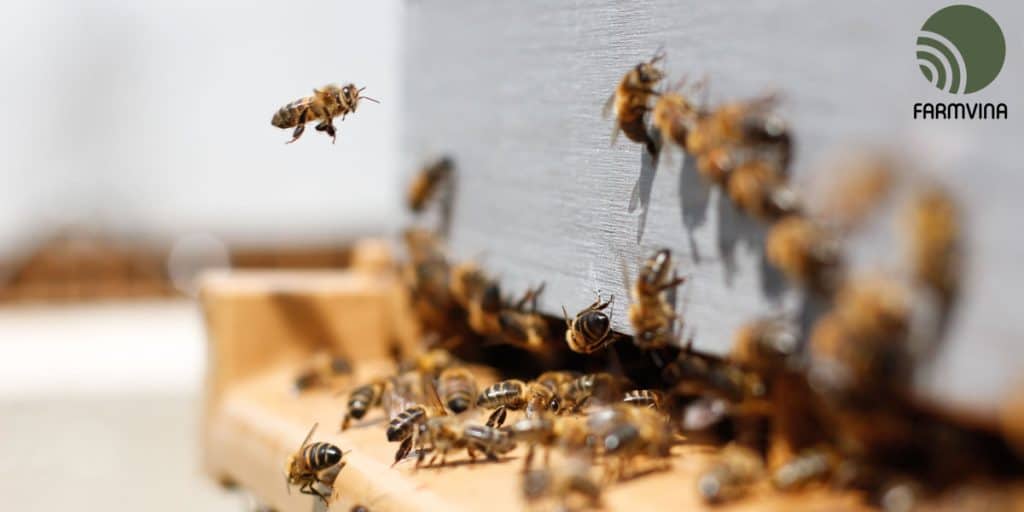Swarm Management
It’s important to be able to tell when your bees are preparing to swarm, or have already swarmed. You will also need to know what steps to take when they do swarm. That you will learn in this post about swarm management.
- Bees swarm, usually in spring when there is lots of food, in order to establish a new colony. This is the colony’s natural means of reproducing itself.
- When bees are preparing to swarm, the workers will make a queen cell, into which the queen lays an egg that will develop into a new queen. Before the new queen hatches, the original queen will leave the hive with half of the bees. They will initially settle within 50 meters of the hive while they seek a new home.
- The swarm will hang as a cluster of bees on a branch or other structure, while scout bees search for a location to set up their new home in.
- There are a number of reasons why it’s important to do swarm management (catch the swarm):
- Honeybees may not be native to your local area.
- Swarms can nest in and damage property or cause a nuisance to your neighbors, particularly in urban areas.
- You probably don’t want to lose half of your colony, particularly in an area with a short honey season, as this will greatly reduce the amount of honey your bees can produce.
- By regularly inspecting your hive you can anticipate if the bees are preparing to swarm.
- If there are queen cells in the hive, usually at the bottom or edges of the brood frames, the colony is preparing to swarm (Queen cells that are in the middle of the frame are more likely to be supersedure cells, which are built when the colony wants to replace the queen.).

- Some beekeepers try to remove queen cells before the colony swarms, but this rarely works.
Splitting a hive:
If you have a hive that looks like it’s getting overcrowded, you can prevent the bees from swarming by doing a walkaway split before they have built any queen cells. This means removing half of the bees, brood and honey and installing them in another hive. The half that does not have the queen will raise a new queen.
When a hive has already swarmed:
- If you find that there are no eggs or developing brood in your hive, the colony may have already swarmed. Look for hatched queen cells, which will be queen cups with the ends chewed off.
- Search for the new queen, who may not have started laying yet.
- When a hive has re-queened it is recommended that you monitor the hive to ensure that the queen has survived and commenced egg-laying. A brood development calendar is a useful tool when assessing the status of your hive (illustration below).
- The calendar enables you to calculate when you expect to find eggs in the hive. For example, it takes approximately 2 weeks from hatching for the queen to mature, complete her mating flights and commence laying.
- Check the hive again after a week and search for eggs. If there are no eggs being laid in the hive for 2 weeks, you may need to order a replacement queen.
- If the new queen is laying, but all the new brood is drone brood, this means the queen has mated badly and needs to be replaced.
- Sometimes a colony will repeatedly swarm due to their genetics. In this case, you need to replace the queen.

Catching swarms:
- To catch a swarm in an easy to reach location, place a container or hive under the swarm, and shake the swarm into it. (See the “Catching a swarm” lesson.)
- The swarm will only remain in the catch box if you have managed to catch the queen. You will soon realize whether or not you have succeeded. If you have the queen all of the bees in the swarm will follow. If you didn’t get the queen, the bees will return to their original location.
- If a swarm is located high off the ground, you can attach a bucket to a long pole and try to shake the swarm into it. Or use a bait hive with bee lures to attract the swarm down into the hive.
Note: Take extra precautions when trying to catch a swarm that is high up. Don’t climb or use a ladder, as this is too risky.
Once you have caught the swarm, leave your catch box in place until l the evening or nighttime. This ensures foragers have returned to the hive and avoids leaving confused bees at the swarm site that may cause a nuisance. You can then relocate the swarm to your apiary site.

- If the bees have started to build comb in their new location, they are no longer a swarm but have established themselves as a new hive. Do not expect them to be as docile as a swarm.
- Relocating an established colony is no longer a swarm catch but is referred to as a cut-out. In this instance cut the combs and use elastic bands to position them in your foundationless brood frames, then shake the rest of the bees into the hive. Wait for the evening when foragers have returned before moving the hive. You will need to follow the guidelines for moving an established hive; either 1 meter (3 ft) at a time or over 5 kilometers (3 miles).
Originally posted 2020-08-26 10:00:55.




Iam so glad to find a lot of helpful articles about beekeeping here. Keep up good work!
@Henrydor: Thanks! We will do 🙂